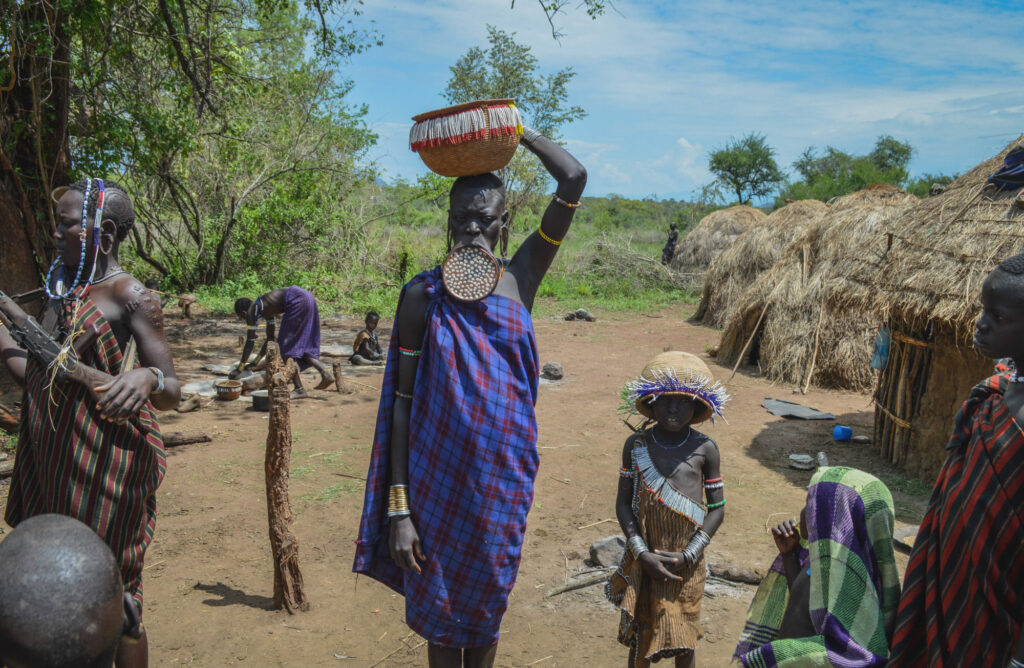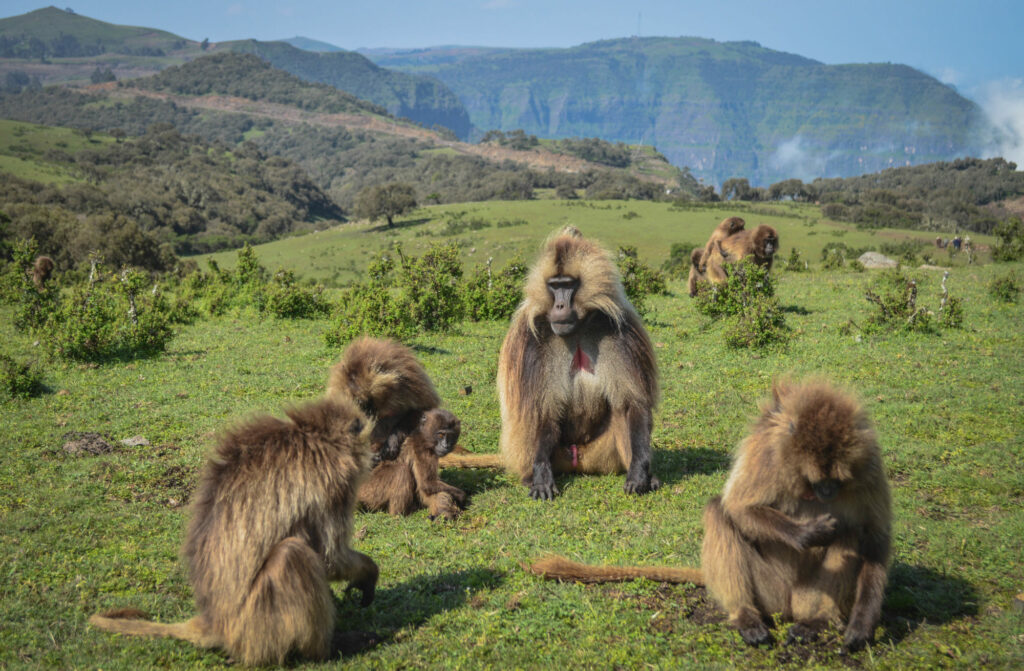6 Reasons To Visit Ethiopia
A visit to Ethiopia is a transformative experience. Everything you know about this nation will change after you witness its outstanding history, culture, and sights. The Ethiopian experience is one that you are not likely to forget, whether it’s witnessing a bull jumping ceremony, joining pilgrims in a 2000-year-old church, or sharing delicious food on a giant piece of sponge flat bread. To simply put it, Ethiopia will change you! Here are six reasons why your next trip to Africa should include Ethiopia.
1. THE PEOPLE

From the Orthodox Christians in the North, extremely tall tribes of the West, Muslim Somali descent in the East, and Lip disk adorned tribes in the south, Ethiopia’s population is a diverse mix of cultures. Last names and appearances define what region you come from, and the cultural differences amongst the people. Ethiopia’s fascinating mix of people shows its true colours in its melting pot capital city, Addis Ababa. Travel past the capital and each region is like a new country with language, culture, and even religion completely changing!
Addis Ababa is a wonderful place to get to know Ethiopia’s people. In the markets, you will see all cultures of Ethiopia mixing together, and working together as one. Regardless of which part of the country you are from, Ethiopians all agree to be Ethiopian.
The people of Ethiopia will always greet you with a smile, and love to share their culture with you. Traveling here you will soon realize that Ethiopian hospitality is infectious. Do not be surprised if you get invited in for a coffee ceremony!
2. CHANGING LANDSCAPES

Most people imagine Ethiopia to be a dry arid desert, but this is undoubtedly, not the case. Just as diverse as the people are, Ethiopia’s landscape alters just as drastically. From the world’s lowest and hottest desert on earth to chilly highland mountains, Ethiopia’s’ scenery will blow you away.
The Danakil Is one of the hottest and most inhospitable places on earth. Here you will see salt flats, sulphuric bubbling lakes, and roaring volcanoes spitting lava. Visiting the Danakil can be an arduous journey, but well worth it.
In the north is the Simien mountains. These green high altitude mountains hide lush valleys and towering waterfalls. You can also find plenty of forests here, something most don’t imagine in Ethiopia.
Whatever adventure you choose in Ethiopia, be sure to take a few bus journeys and watch the landscape change slowly as you cross this diverse region of Africa.
3. THE FOOD

Ethiopian food is unlike any other cuisine you have ever had before. Each region’s cuisine is unique, but wherever you are in Ethiopia you are guaranteed Injera. Injera is a sour sponge flat bread that is used to pick food off the plate, and is the plate all the food is served on.
Typically, Ethiopians all share from the same dinner plate size Injera. Multiple types of meats, and vegetables that resemble curry dishes are plopped on top of the Injera. The Meat and Vegetable dishes in Ethiopia rely heavy on flavour combining butter, spices, and chilis. Beware some of Ethiopia’s regions foods can be incredibly spicy.
With so many influences from neighboring countries, Ethiopia’s cuisine will keep you interested long after you have left its borders.
4. WILD ORTHODOX ROCK CHURCHES

Ethiopia is said to be the first Christian nation on the planet. Its rich history displays this nation’s past with rock hewn churches cut into the earth, remote monasteries only accessible by death defying climbs, and secret monasteries with mysteries surrounding the Arc of the Covenant.
Lalibela is the most famous of these rock hewn churches. With over thirty stone cut churches sprawled out amongst peaceful farmlands to explore. Imagine crawling through tunnels through a maze of crypts and churches, the experience is incredible.
In Ethiopia’s North, you will find many churches around Axum. Here the churches take nerves of steel to reach. Many of them are only reachable by free climbing up solid rock faces or using a leather rope to pull yourself up a mountain side.
Whether you are an adrenaline junkie, or just a traveler the churches here are sure to amazing even the most jaded traveller.
5. TRIBAL LANDS

Ethiopia is one of the last destinations on earth where you can interact with authentic tribes who still live a primarily nomadic lifestyle. The tribes in Ethiopia are amongst some of the most interesting, and most well known.
A visit to one of the communities in Ethiopia’s Lower Omo Valley can take you to Hamer bull jumping ceremonies, the lip disked tribes of the Mursi, and sacred sites protected by wooden effigies from the Konso tribe.
Visiting the tribes is not an easy, it takes a very well organized tour, and some luck, because the region prefers to keep the tourist numbers low prevent these cultures from being affected. Therefore, it is essential that you visit these tribes with a guide, and be conscious about doing your part in preserving these beautiful cultures.
6. WILDLIFE

With Kenya and Tanzania being so well known for safari’s, Ethiopia has remained under the Safari radar. This mean low tourist numbers, and optimal wildlife spotting! Prices are also incredibly low compared to Ethiopia’s neighbors.
In the highlands of Ethiopia, you can witness Gelada Baboons waging war of the teff fields, or the majestic Ethiopian Ibex pouncing from one cliffside to another. The mountains make great opportunists for bird watching as well.
Ethiopia’s South has crocodile filled lakes and plains inhabited by lions and zebra. These regions resemble Kenya’s famous Serengeti National Park. Many of the national parks you will find only yourself visiting them at times!
In the East, the Babille Elephant Sanctuary gives plenty of opportunities to get up close and personal with these beautiful behemoths. Nearby in Harar the locals have trained the Hyena’s to be friendly and if you’re brave enough you can even feed them from a stick protruding from your mouth!
Start packing and we’ll see you in Ethiopia!
Author: Stephen Gollan

comments
Be the first to leave a comment for6 Reasons To Visit Ethiopia